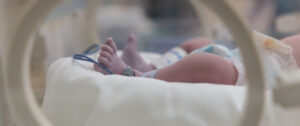ASHA members who are working on a cleft and craniofacial team need access to the latest evidence-based practice to provide the highest quality care to the people they serve. The ASHA journals are a great place to start, with hundreds of articles across our vast archive. In recognition of National Cleft & Craniofacial Awareness & Prevention Month, read some of the new and trending articles across this topic area below.
Speech in Individuals With Cleft and Craniofacial Disorders
Characterizing Speech Phenotype in Individuals With Craniofacial Microsomia: A Scoping Review: This article summarizes current evidence in craniofacial microsomia—the second most common congenital facial condition. The authors highlight the clinical implications of their findings and note additional research needs.
Do Adult Naïve Listeners Perceive Differences in Speech Before and After Therapy for Cleft Palate Speech Disorders? A Reliability Study of Perceptual Speech Ratings: Untrained listeners can be a good judge of real-world communication skills. In this study, listeners noted speech improvements across various measures following just 10 hours of speech therapy in children with cleft palate.
Education and Training
Impact of an International Training on Interventionists’ Expertise in Cleft Palate Speech: Results From Oaxaca, Mexico: International charities provide children born with cleft lip and palate with surgical repair, but these children may retain their previous compensatory speech patterns. Learn about a two-stage training program in Mexico aimed at helping local speech-language pathologists (SLPs) provide specific, high-quality speech services to children born with cleft palate.
Continuing Education Needs of Speech-Language Pathologists for Assessing and Treating Children With Cleft Palate: A National Analysis Across Areas of Varying Population Density: Due to the relatively low incidence of cleft palate, SLPs may not feel adequately prepared to treat children who have this condition. Access to training and continuing education can help SLPs, particularly those in rural areas, provide better care for these individuals.
Children With Cleft and Craniofacial Disorders
Attributes That Increase Vulnerabilities to Reduced Human Milk Feeding Outcomes Among Babies With Cleft Lip and Palate in the Neonatal Intensive Care Unit: Children with cleft lip and/or palate may drink human milk via specialty feeding systems, but results vary. In this article, researchers looked at more than 600 infants with cleft lip and/or palate to identify infant and maternal factors that may serve as barriers to human milk consumption.
Pediatric Medical Traumatic Stress in Individuals With Craniofacial Conditions: Children with cleft and/or craniofacial concerns often receive ongoing medical monitoring, hospitalizations, and surgeries that can adversely affect their psychological well-being. SLPs can help identify, address, and prevent medical traumatic stress in craniofacial care and integrate trauma-informed care practices into their work.
Children With Cleft and Craniofacial Disorders
ASHA Journals offers invaluable resources for SLPs working with cleft and craniofacial teams. You can read hundreds of articles on cleft and craniofacial disorders on ASHAWire, or start with our previous coverage of National Cleft & Craniofacial Awareness & Prevention Month below.
We take our responsibility to help you provide compassionate care to the individuals you serve seriously. Thank you for all the work you do helping all individuals—including those with cleft and craniofacial disorders—to communicate more effectively!
Previous Coverage of National Cleft & Craniofacial Awareness & Prevention Month
National Cleft and Craniofacial Awareness Month at the ASHA Journals (2023)
July Is National Cleft and Craniofacial Awareness Month (2022)
July is National Cleft and Craniofacial Awareness Month! (2021)Support National Cleft and Craniofacial Awareness Month With the ASHA Journals (2020)







